How to Track Your Email Outreach Like a Pro
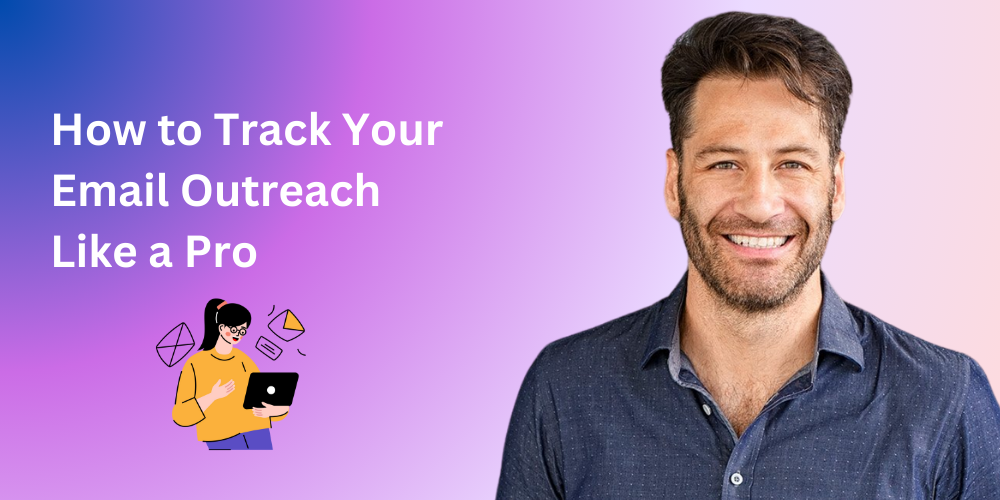
Imagine sending emails into a black hole, unsure if they’re even being opened. Scary, right? 😱 Thankfully, we’ve moved beyond digital guesswork. Email outreach tracking is here to save your sanity—and your campaigns.
Email outreach isn’t about firing off random messages into the void. It’s strategic, targeted, and measurable. Without tracking, you're flying blind, wasting time, and likely missing golden opportunities.
What is Email Outreach?
Think of email outreach as digitally knocking on someone’s door—but with purpose. Whether you're a marketer, founder, recruiter, or freelancer, outreach helps you:
- Build authentic relationships with prospects or influencers
- Generate leads that actually convert
- Earn backlinks for SEO
- Land partnerships or guest posting gigs
- Reignite cold leads with a warm touch
In the B2B world, it’s how you nudge someone from “Who are you again?” to “Let’s hop on a call.” 😉 Done right, it opens conversations. Done wrong, it lands you in the spam graveyard.
What is Email Outreach Tracking?
Glad you asked! Email outreach tracking is your behind-the-scenes dashboard. It shows what happens after you hit “send.” You can see:
- Who opened your email
- When they opened it
- What links they clicked
- If they replied—or ignored you
- Whether you landed in spam
It’s not creepy—it’s data-driven marketing intelligence. Think of it as your outreach X-ray vision.
How to Improve Email Deliverability (and Avoid Spam Jail)
Nobody crafts a brilliant email just to watch it rot in a junk folder. Here’s how to earn inbox respect:
- Warm up your inbox: Start by sending 10–20 friendly emails/day to real people (friends, colleagues). Gradually increase volume.
- Authenticate your domain: Set up SPF (Sender Policy Framework), DKIM (DomainKeys Identified Mail), and DMARC records. These tell email providers: “Hey, I’m the real deal.”
- Avoid spammy language: Ditch caps lock, excessive exclamations (!!!), and sketchy words like “FREE MONEY.”
- Use a reputable sending domain: Avoid using free domains (e.g., Gmail or Yahoo) for mass outreach. Custom domains are safer.
These 10 Email Outreach Metrics Tell You Everything 🚀
Ever wondered if your emails are hitting the mark or landing straight into the abyss? Tracking the right metrics is your golden ticket to clarity. Here’s your friendly guide on what numbers to watch (and why they matter)!
1. Email Open Rate Your open rate tells you if your email grabbed someone's eyeballs or ended up buried in their inbox wasteland. This metric lives or dies by your subject line—make it catchy, personal, and curiosity-driven. A solid open rate sits between 20-25%, but savvy senders aim even higher.
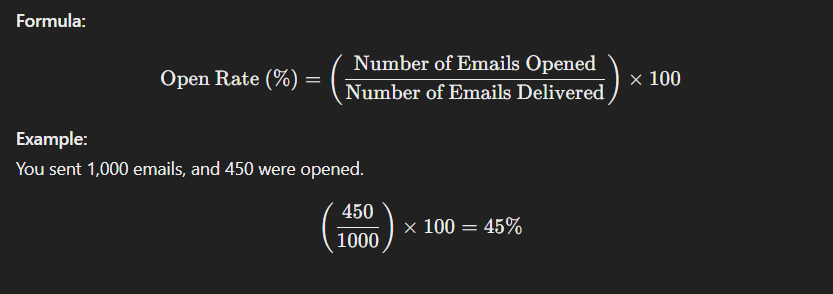
2. Reply Rate Replies mean real conversation (and less lonely inbox syndrome!). Want more replies? Qualify your leads, ask engaging questions, personalise your messages, and always end with something they’ll feel compelled to answer. Aim for 10-20% or higher to truly smile.

3. Bounce Rate Bounce rate is the number of emails rejected by inboxes faster than you can say "email marketing." Two kinds:
- Soft bounce: Temporary problems (full inbox). Wait and retry later.
- Hard bounce: Permanently undeliverable (invalid addresses). Remove these immediately, or your sender rep takes a nosedive.

4. Click-Through Rate (CTR) CTR is your bestie—it shows if people care enough about your offer to click. A strong CTR (around 2-5%) means your audience finds your message compelling enough to explore further. Perfect your CTA placement and make your value clear.

5. Spam Complaint Rate When recipients hit "Report Spam," your reputation gets bruised. Keep this below 0.1% by carefully curating your email list, spacing follow-ups (3-5 days), and avoiding spammy buzzwords. Don’t be the email everyone hates to see.

6. Conversion Rate Clicks are good, but conversions? Now we're talking! Whether it's signing up, downloading, or buying, your conversion rate (aim for at least 2-5%) is your true success indicator. Make every click count with enticing offers and smooth user experiences.

7. List Growth Rate Are you expanding your empire or losing followers faster than a bad sitcom? A positive growth rate shows you’re continuously reaching new potential customers. Keep it upward by regularly updating your content and list.
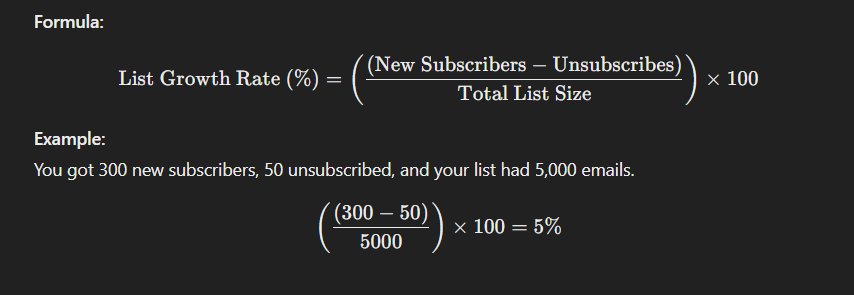
8. Email Sharing/Forwarding Rate Your emails being shared means free marketing—jackpot! Boost this by encouraging recipients to pass it along or by crafting content worth gossiping about. Anything above 1% here is a win!

9. Overall ROI ROI answers the "Is this worth it?" question loud and clear. It's your earned dollars vs spent dollars ratio. Good ROI makes your boss smile; bad ROI means it's strategy rethink o’clock.
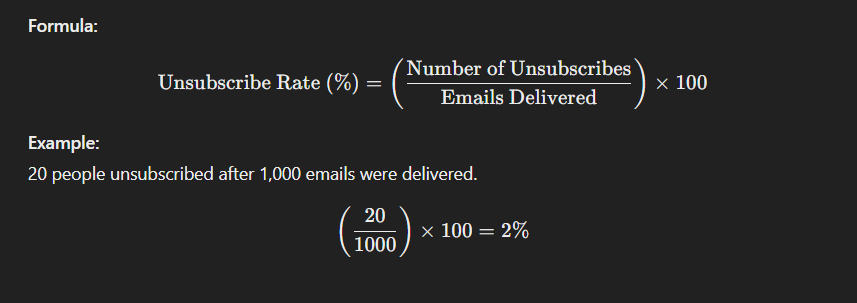
10. Unsubscribe Rate Unsubscribes hurt, but don't panic! A rate below 0.5% is typical. But remember, low unsubscribes can still mean uninterested audiences who just ignore you. Balance this number with engagement metrics like CTR and conversions to see the real story.

Now, stop guessing and start tracking! Your inbox (and your sales figures) will thank you. 😉
Best Email Outreach Tracking Tools
A high-quality outreach campaign is incomplete without the right tracking tools. Here are the top email outreach tracking tools that you might want to incorporate in your next campaign:
MailTrack
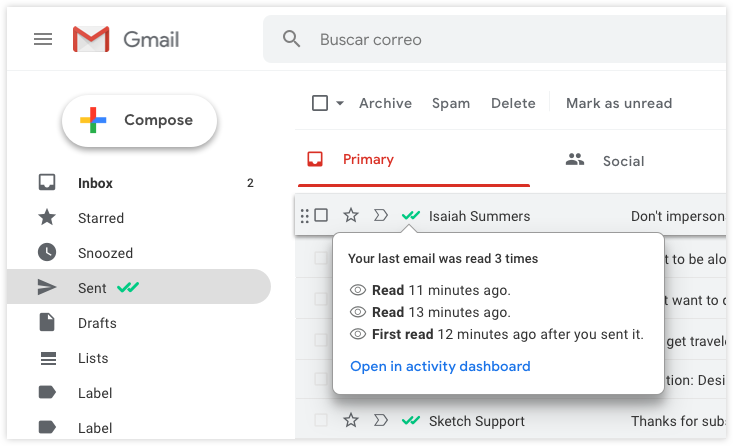
MailTrack is a free email tracking tool for Gmail that works as a browser extension.
Pricing: Free basic plan; paid plans start from $1.99 per month.
Features:
- In-browser alerts for time-sensitive emails such as sales proposals or cold email replies;
- Alerts when your email is opened, as well as when it remains unopened for a long time;
- Paid version includes link-click alerts and daily reports;
- No separate dashboard required; works directly within your Gmail inbox.
Boomerang

Boomerang is a Gmail tracker and productivity tool featuring open and link-click alerts.
Pricing: Free basic plan; paid plans start from $4.99 per month.
Features:
- Sends reminders when your emails don’t receive a response;
- Alerts when emails are opened, replied to, or links are clicked;
- Email scheduling for optimal delivery times;
- Additional productivity tools such as inbox pausing and one-click meeting invites.
RightInbox
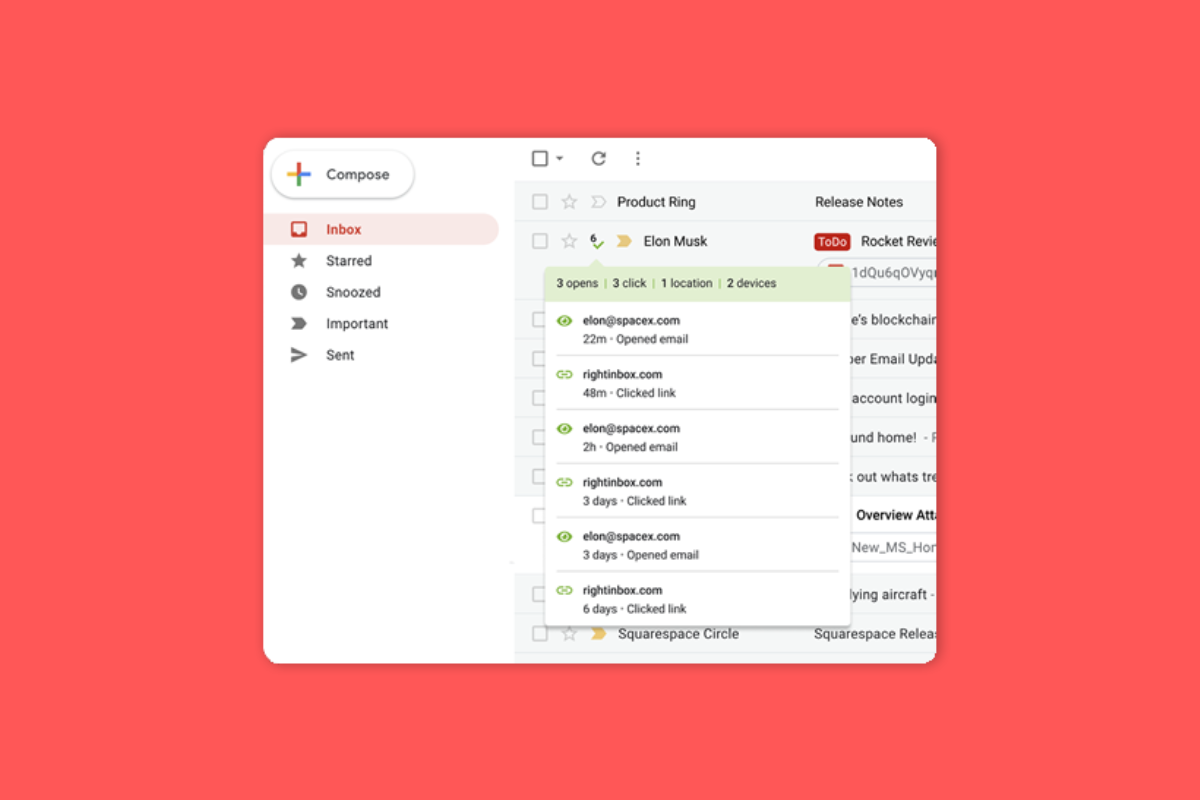
RightInbox is an email and PDF tracker and reminder tool for Gmail and G Suite, enhancing your inbox productivity.
Pricing: Free basic plan; paid plans start from $5.95 per month.
Features:
- Quick installation as a browser extension within 30 seconds;
- Real-time tracking of email opens and link clicks;
- Multiple email signature options;
- Ability to add private notes to conversations for quick context review.
Gmelius
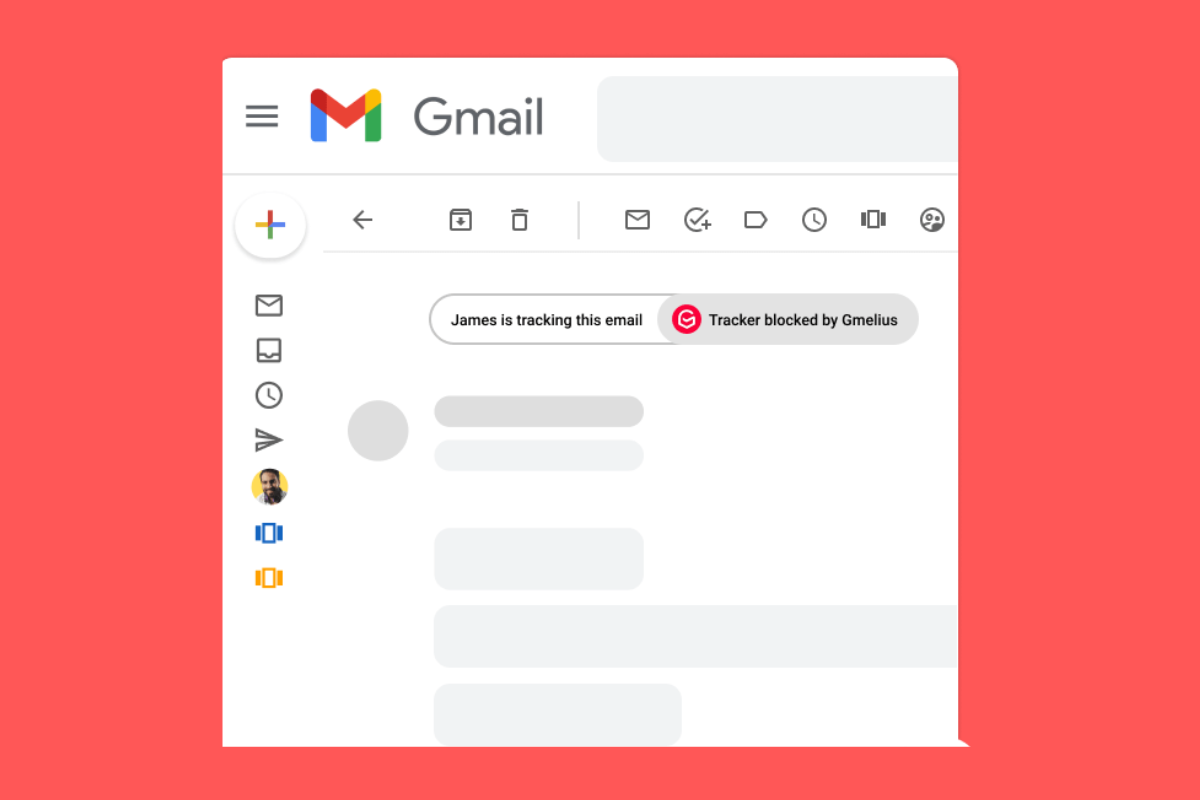
Gmelius is a collaborative email tracker and productivity platform for G Suite and Gmail accounts.
Pricing: Starts at $9 per month.
Features:
- Integrates Kanban boards, shared team labels, and email drafts into Gmail;
- Detailed email tracking, including total interaction count and unopened email alerts;
- Tracks emails sent to CC’d and BCC’d recipients;
- Provides comprehensive team activity reports.
Cirrus Insight
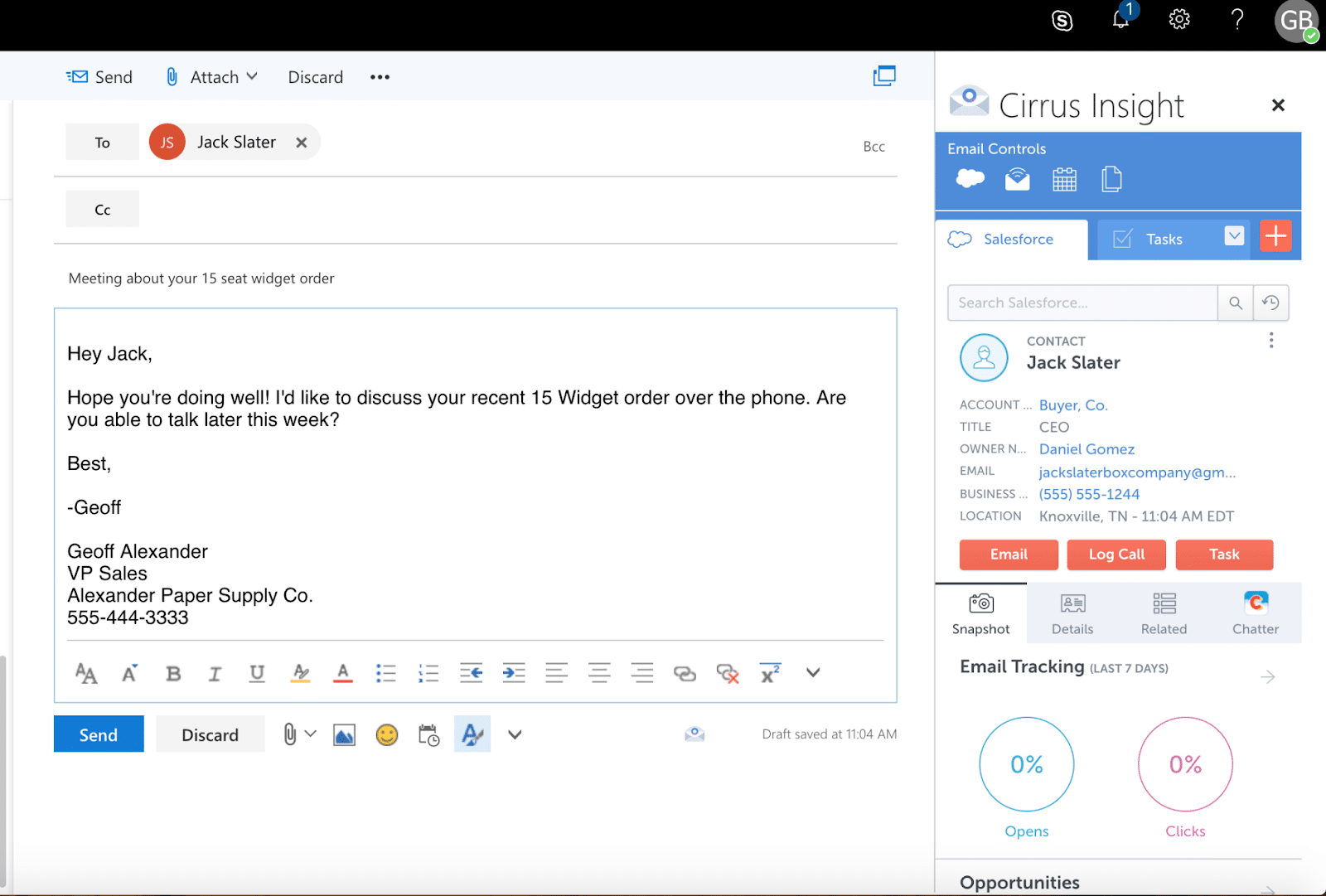
Cirrus Insight is an email tracking tool for Outlook and Gmail with Salesforce integration, ideal for aligning email activities with CRM workflows.
Pricing: Starts from $10 per month.
Features:
- Unified tracking information accessible directly within Gmail or Outlook;
- Tracks email opens, link clicks, and includes web visitor tracking from company IP addresses;
- Facilitates seamless CRM data synchronization, maximizing Salesforce capabilities.
A high-quality outreach campaign is incomplete without the right email outreach tools.
How to Warm Up Your Inbox (Without Getting Ghosted by Spam Filters!)

Alright, let's chat about warming up your email inbox. Ever felt like your carefully crafted outreach emails vanish into a digital black hole? Yep, blame spam filters—they’re the bouncers of the email world. So, how do you charm your way past them? Here's a quick guide:
Step 1: Authenticate Your Account (a.k.a. Get Verified)
Think of authentication as your digital passport. Without it, your emails might as well be floating in cyberspace forever.
Here's your checklist:
- SPF (Sender Policy Framework)
Think of SPF as the guest list at a club—it tells email servers who's allowed in. Set up your SPF record correctly, and you'll get VIP treatment. - DKIM (DomainKeys Identified Mail)
DKIM is like signing an autograph—your domain's digital signature proves you're legit and not some shady spammer trying to sneak into inboxes. - DMARC (Domain-based Message Authentication, Reporting & Conformance)
DMARC combines your SPF and DKIM to reassure email servers you're safe. It’s the digital equivalent of your best friend vouching for you at the door.
Step 2: Start Friendly Chats (Not Just Monologues!)
Spam filters love conversations. Casually send 15-25 emails to friends or colleagues, spread out through the week. Mix things up—use Gmail, Yahoo, Outlook, iCloud, and more. Don't just talk—reply too! Keep this friendly chat going for 4-6 weeks. Think of it as your inbox's dating phase before your big outreach move.
Quick Guide to Email Inbox Warm-Up
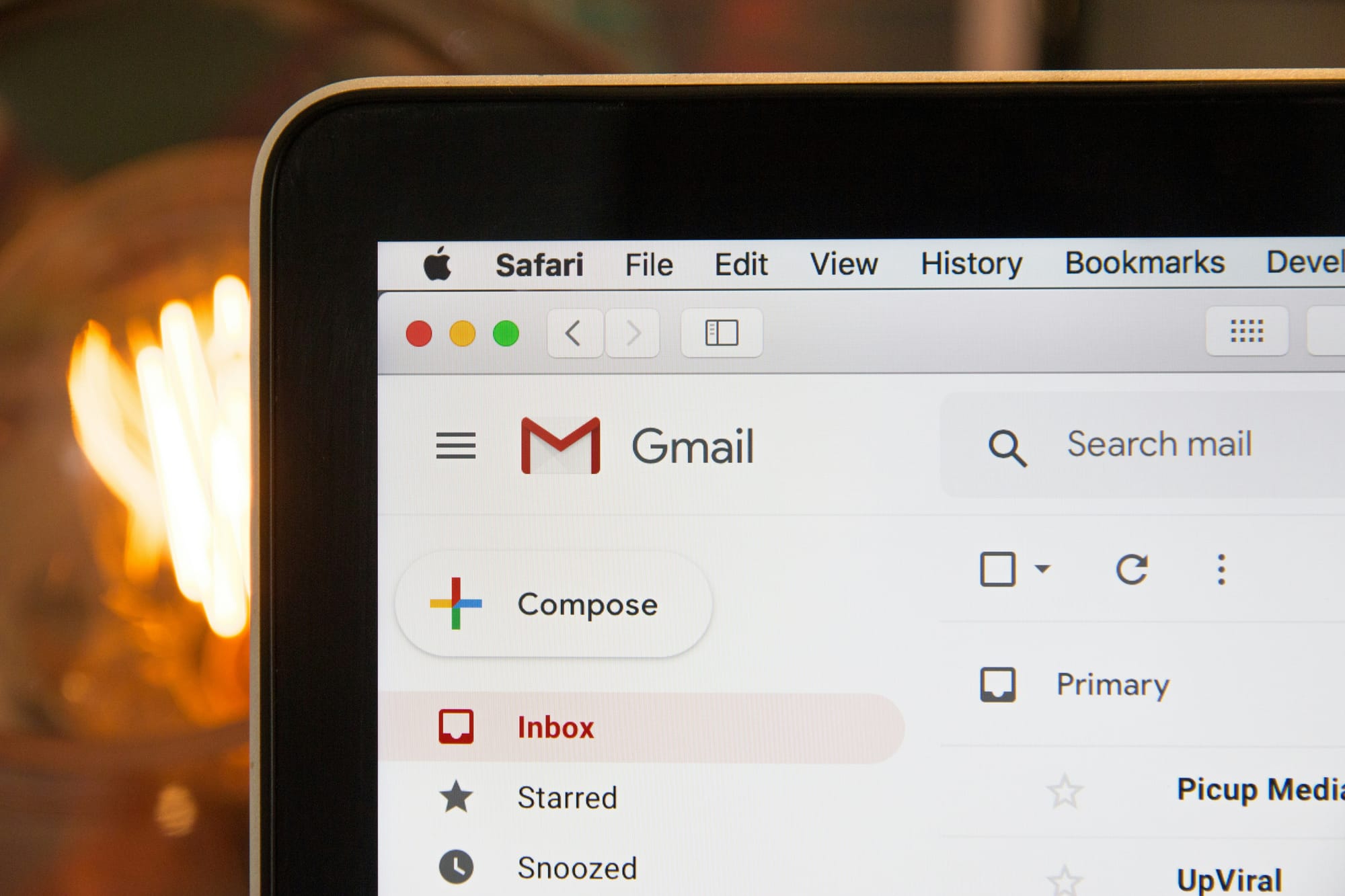
Before launching full-scale outreach campaigns, it's crucial to warm up your email inbox effectively. A proper warm-up helps you avoid spam filters and increases your email deliverability rates significantly.
Recommended Duration: Ideally, you should warm up your inbox over 2–3 months, particularly if you're using a new domain. This gradual approach builds trust with email service providers (ESPs).
Warm-Up Method:
- Start Slowly: Begin by sending just a few conversational-style emails daily.
- Encourage Replies: Send personalized messages that encourage responses, creating a natural email exchange pattern.
- Establish Consistent History: Regular sending and receiving activity is critical. Consistency is more important than volume initially.
Diversify Your Contacts: Make sure your warm-up process includes a variety of email providers like Gmail, Outlook, Yahoo, and others. Diversifying ensures broader deliverability and improves inbox placement across different ESPs.
Leverage Warm-Up Tools: Automate the warm-up process using trusted platforms:
- Mailwarm: Sends and responds to emails automatically, engaging with authentic mailboxes.
- Lemwarm: Creates realistic conversations by exchanging emails within a peer network, boosting your sender reputation.
- Warmbox: Mimics natural email interactions with real, active inboxes to improve your domain’s credibility.
By following these guidelines, your inbox will be primed and ready for high-volume outreach with optimized deliverability.
Don't Get Banned: How to Safely Warm Up Your LinkedIn for Automated Outreach 🚀

Ever noticed how LinkedIn outreach feels a lot like sending emails? Yep, you're spot-on! And guess what—combining both LinkedIn and email outreach can skyrocket your results. But hold your horses 🐴. If you're new to LinkedIn automation, going slow at first is key to avoiding that dreaded "account restricted" message.
Here's how you warm up your LinkedIn account without setting off alarms:
- Days 1-5: Chill with about 10 connection requests daily.
- Days 5-10: Turn it up slightly to 20 requests each day.
- Days 15-20: Now you're cooking with gas! Aim for around 30 daily.
- Days 20-25: You've earned your stripes—50 connection requests per day are fine now.
But wait—sending invites isn't the only game in town. You gotta watch your acceptance rate too. Aim for at least 60% because LinkedIn isn't a fan of users with too many ignored requests (they think you're a robot 🤖). A good rule of thumb? Keep your outstanding connection requests below 3-5% of your total connections.
6 Steps to Supercharge Your Email Outreach

So, you've got your new account warmed up, and your metrics are lookin’ good. Now what? Well, buckle up, my friend, because it's outreach time! Here are 6 super practical (and totally not boring) steps to make sure your emails land like a charm.
1. Embrace A/B Testing (Because One Size Doesn't Fit All)
A/B testing might sound fancy, but it's just a fun experiment to figure out what works best with your audience.
How do you nail it?
- Test just one thing at a time—like subject lines. Same email, different headlines. Simple.
- Once you find your winner, move to the next test. Got a killer subject line? Awesome, now play with your CTAs.
- Use a decent sample size. No point deciding your whole strategy on three random people!
2. Craft Subject Lines That Actually Get Opened (Not Deleted)
Your subject line is like your first impression at a party—make it good or you'll end up ignored by the snack table.
Did you know?
- Emails with personalised subject lines get opened 26% more often.
- 69% of recipients toss emails straight into spam because of sketchy or boring subject lines.
So, make your subject short, punchy, and interesting—maybe even throw in a playful emoji 😜. But keep it relevant—no clickbait allowed!
3. Write Emails People Actually Want to Read (Crazy, I Know)
Your email needs a clear pitch, a sprinkle of personality, and a heap of value:
- Pitch: Be crystal clear. If your reader scratches their head wondering what you're talking about, you’ve already lost them.
- Personalization: Make your reader feel special, like they’re the hero of your email—not just another faceless number on your mailing list. (Leadplay.io can help automate this while keeping it human!)
- Value Proposition: Ever heard of give before you take? Show clearly how your email solves their problems or makes life easier. Nobody wants another vague, pointless email.
4. Reach the Right Humans (Not Their Assistants)
All the best-crafted emails in the world are pointless if they're not landing in the right inbox.
Quick tips:
- Always aim high—reach for decision-makers like CEOs, directors, or executives. Leave those lovely gatekeepers alone.
- Tools like LinkedIn Sales Navigator can be your best friend to laser-target your audience effectively.
5. Don't Ghost Them—Follow Up!
If your email doesn’t get a response, chill—it happens. People are busy; they aren’t always ignoring you.
What to do?
- Wait about three days, then gently follow up. Keep it casual and friendly—nobody likes a desperate emailer!
- One follow-up not enough? Give it one more try, but don’t push beyond 2-3 attempts.
6. Go Omnichannel When Emails Fail
If emails and follow-ups aren't landing, don’t panic! Switch up your approach:
Here’s a simple game plan:
- Didn't open your email? Send a LinkedIn connection request.
- They accept? Message them after about half an hour.
- Still nothing? Like or comment on their latest LinkedIn post. It’s casual, non-creepy, and sometimes does the trick.
Using a tool like Leadplay.io, you can automate these clever little tactics and save tons of time.
Why Choose LeadPlay.io?
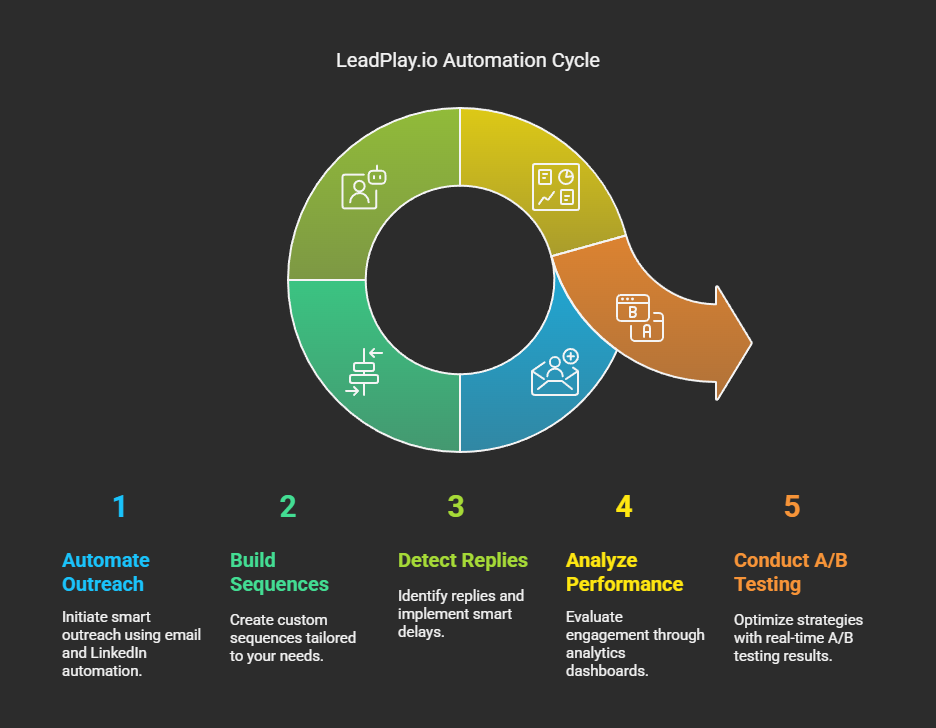
If you're serious about automating smart outreach, LeadPlay.io is your new best friend. It combines the power of:
- Email + LinkedIn automation
- Custom sequence builders
- Reply detection + smart delays
- Analytics dashboards with reply/open/click rates
- A/B testing with real-time results
Plus, it’s user-friendly, budget-friendly, and designed for solopreneurs, teams, and agencies alike. If you want to stop manually chasing leads and start converting them, this is your tool.
Final Thoughts: Stop Shooting in the Dark
Email outreach is still one of the most powerful growth strategies in the game—but only if you're tracking what works (and what bombs). Use tools. Track metrics. Warm up your inbox. And please, for everyone’s sake—stop sounding like a spam bot.